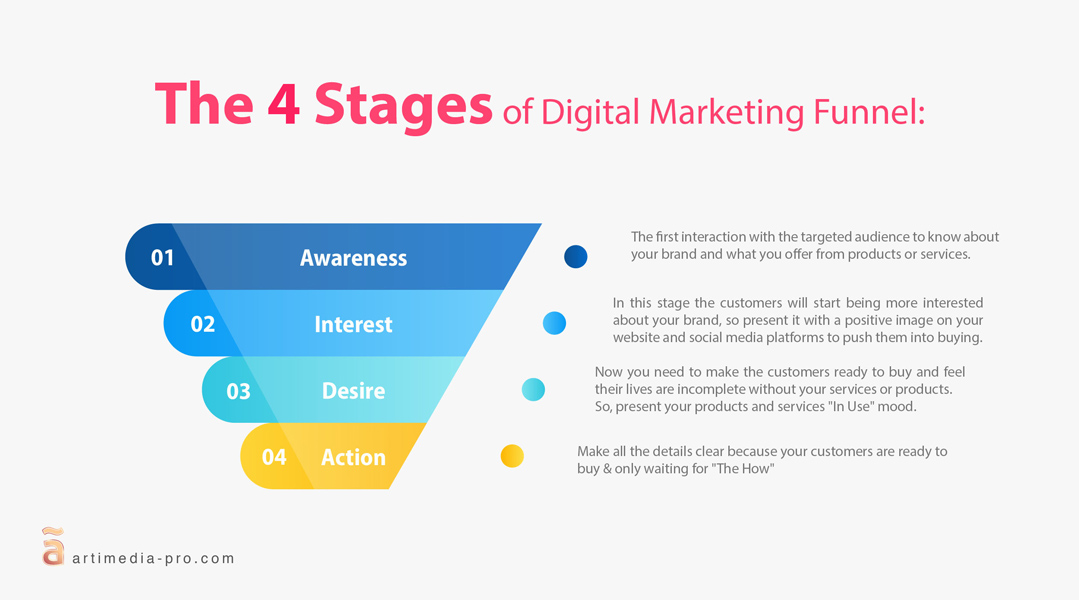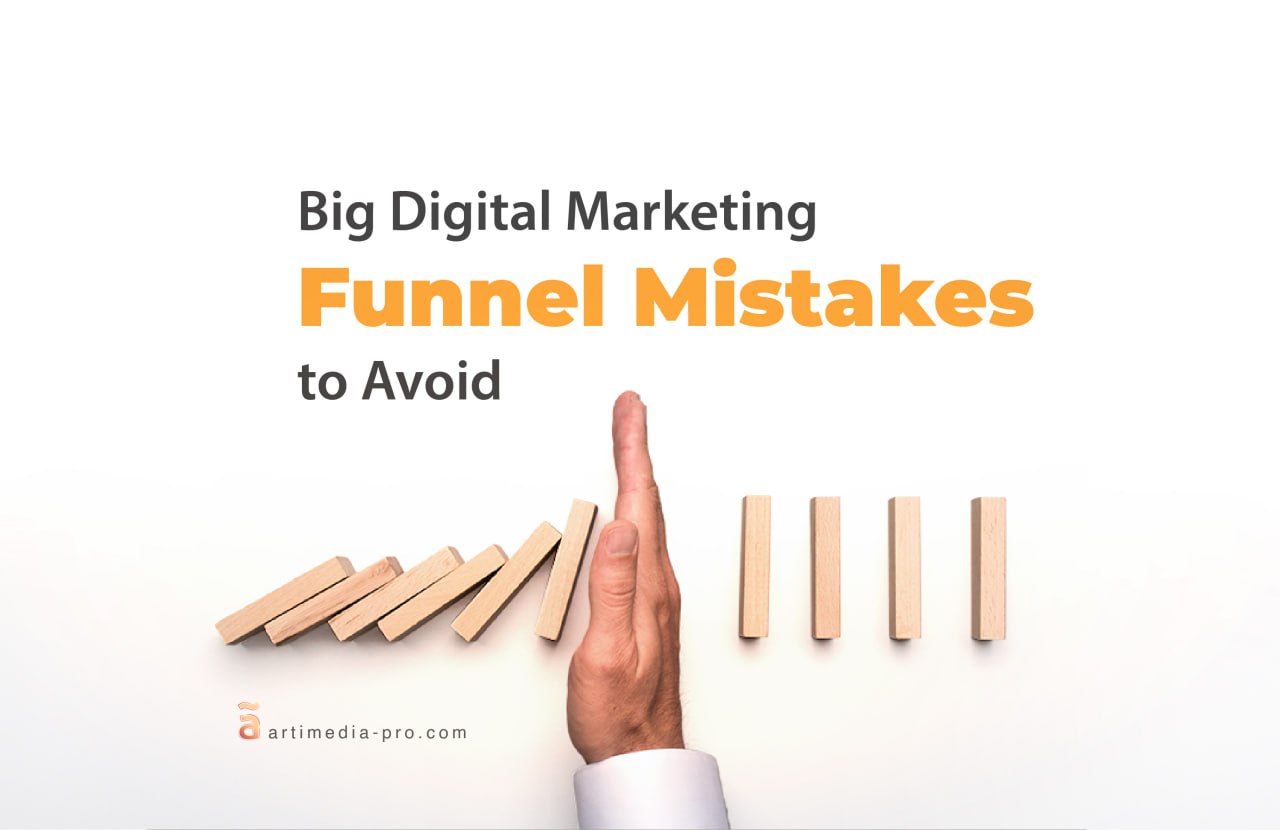Table of Contents
Every interaction a customer has with your brand is a step on a journey. But is that journey a random walk or a clear path leading to a specific destination? A well-structured digital marketing funnel ensures it’s the latter, guiding potential customers from initial awareness to loyal advocacy. This guide will demystify online marketing funnels, explaining what they are, how to build one, and why they are essential for your business’s growth.
What Is a Sales Funnel in Digital Marketing?
A marketing funnel in digital marketing is a strategic model that visualizes the customer journey, from the first moment they learn about your brand to the point they make a purchase. Think of it as a roadmap that maps out each stage of a prospect’s decision-making process. The “funnel” shape represents the decreasing number of people who move on to each successive stage.
The primary purpose of a digital marketing funnel is to attract a large audience and then systematically nurture them into customers. It allows you to tailor your messaging and content to a user’s specific level of awareness and intent. This targeted approach makes your marketing efforts more efficient, increases conversion rates, and helps build stronger customer relationships.
Each stage of the funnel requires different tactics. For example, you wouldn’t ask for a sale from someone who has never heard of your brand. Instead, you would offer them valuable content to build trust first. Understanding this progression is the key to turning strangers into leads and leads into loyal customers.
The Digital Marketing Funnel Stages
The classic marketing funnel is often broken down into several key stages, each with its own goals and marketing channels. While models can vary, a common framework includes Awareness, Consideration, Conversion, and Loyalty.
Stage 1: Awareness (Top of the Funnel)
This is the “attraction” phase, where your primary goal is to reach a broad audience and introduce them to your brand. Potential customers at this stage are experiencing a problem or have a need, and they’re just starting to look for solutions. Your job is to be present where they are searching.
Content for this stage should be educational and helpful, not salesy. Think blog posts, social media updates, infographics, and videos that address common pain points. SEO and social media marketing are critical channels here to ensure your brand gets discovered.
Stage 2: Consideration (Middle of the Funnel)
Once prospects are aware of your brand, they move into the consideration stage. Here, they are actively researching and comparing different options to solve their problem. Your goal is to position your business as the best possible solution and build a deeper relationship.
This is the time to offer more in-depth content that showcases your expertise. Effective formats include case studies, webinars, detailed guides, and email newsletters. Lead magnets, like free e-books or checklists, are excellent tools to capture contact information so you can continue nurturing the relationship.
Stage 3: Conversion (Bottom of the Funnel)
At the bottom of the funnel, prospects are ready to make a purchasing decision. Your marketing efforts should now focus on making it as easy and compelling as possible for them to choose you. The content should be highly targeted and product-focused.
Effective conversion tactics include free trials, product demos, customer testimonials, and special offers or discounts. Clear calls-to-action (CTAs) and a seamless checkout process are crucial. Remarketing ads can also be highly effective at this stage, reminding decision-ready prospects of your offer.
Stage 4: Loyalty & Advocacy
The journey doesn’t end with a sale. The post-purchase phase is your opportunity to turn a one-time customer into a repeat buyer and a brand advocate. The goal is to delight your new customers and foster long-term loyalty.
Engage customers with thank-you emails, customer support, and exclusive content. Loyalty programs, referral discounts, and surveys asking for feedback show that you value their business beyond the initial transaction. Happy customers are your best marketers, as their word-of-mouth recommendations will feed new prospects into the top of your funnel.
How to Build a Digital Marketing Funnel
Creating effective online marketing funnels requires a strategic, step-by-step approach.
- Understand Your Audience: The first step is to create detailed buyer personas. You need a deep understanding of your target audience’s pain points, goals, and online behavior to create content that resonates at each stage.
- Map the Customer Journey: Outline the path you want your customers to take. Identify the key touchpoints and decide what action you want them to perform at each stage of the funnel, from clicking on an ad to downloading a guide or making a purchase.
- Create Content for Each Stage: Develop a content plan that aligns with your customer journey map. Create top-of-funnel content to generate awareness, middle-of-funnel content to nurture leads, and bottom-of-funnel content to drive conversions.
- Drive Traffic to Your Funnel: Use a mix of digital marketing channels to attract your target audience. This can include SEO, pay-per-click (PPC) advertising, social media marketing, and email marketing. The right channels will depend on where your audience spends their time.
- Measure and Optimize: A funnel is not a “set it and forget it” tool. Use analytics to track key metrics like conversion rates between stages. This data will reveal where your funnel is “leaking” prospects, allowing you to make targeted improvements to optimize performance over time.
5 Big Mistakes to Avoid in Your Digital Marketing Funnel:
While doing all the required work to build and develop your digital marketing strategies for ecommerce marketing or any other type of marketing, you must take good care of your digital marketing funnel.
And your work must include avoiding these mistakes to enjoy great results:
1. Not Having a Clear Understanding of the Customer Journey:
One of the biggest mistakes businesses make in their digital marketing funnel is not having a strong understanding of the customer journey.
Even if the digital marketing funnel is about converting viewers into buyers, yet, that does not mean ignoring the whole business marketing process, your target audience’s needs, and the brand’s public image.
Moreover, without a thorough consideration of how your potential customers move from awareness to conversion, your funnel is likely to be misaligned with their needs and expectations, and this can result in lost resources and missed opportunities.
However, to dodge this mistake, invest time in researching and mapping out the customer journey, identifying touchpoints and pain points, and tailoring your funnel accordingly.
2. Using The Wrong Marketing Channels at Each Stage of the Funnel:
Although not all digital marketing strategies work in the same way, however, they should all be part of the big image and interact with each other effectively to achieve results.
And that cannot happen without choosing the right marketing channels at each stage of the funnel, as using the wrong channels that do not align with your target audience’s behavior or intent at a particular stage will make your work useless.
For instance, pushing a hard sales pitch on social media platforms designed for engagement and awareness can be hard, however, you can improve your results by analyzing where your audience spends their time and what type of content resonates with them at each stage, then allocate your resources on the best social media platforms for your business.
3. Creating Content That Is Not Relevant to the Target Audience:
Relevance is paramount in digital marketing, and creating content that does not speak to your targeted audience’s needs or interests will make your digital marketing funnel stages fail.
Many businesses fall into the trap of producing generic content that does not address the specific pain points or desires of their potential customers, or speak in the brand tone of voice.
However, to overcome this mistake, conduct in-depth audience research to understand your consumers’ behavior, and their preferences, challenges, and motivations, then craft content that provides value and resonates with them at each funnel stage.
On the other hand, you should also take care of your included call to action, as it is such a shame to have people reaching the action stage, yet, not taking action, because it was not available or included in the wrong way for the required action, so make sure to use the right type of CTA.
4. Ignore Tracking and Measuring Results:
Staying the same in your digital marketing strategies will simply mean that you will stay behind and not be able to target your audience with the collected data and information.
Thus, you must track and measure the performance of your digital marketing funnel to avoid serious errors that can delay your ability to make data-driven improvements. Moreover, without insights into what’s working and what’s not, you will be left in the dark about where to allocate resources and optimize your strategy.
To fix this, implement robust analytics tools, follow basic digital marketing funnel metrics for each stage of the funnel, and regularly review the data to identify bottlenecks and areas for enhancement.
5. Not Optimizing the Funnel for Conversions:
The ultimate goal of any digital marketing funnel is to convert leads into customers and turn these customers into loyal ones, however, neglecting optimization for conversions is a common misstep.
As businesses often assume that once they have attracted leads, the job is done, but that is not essential as you should continually update your funnel to improve conversion rates.
You can improve your digital marketing funnel by utilizing A/B testing, experimenting with different call-to-actions, and analyzing user behavior to uncover obstacles preventing conversions, and by doing so, you can maximize your funnel efficiency and drive more significant results.
How to Avoid These Digital Marketing Funnel Mistakes?
FAQs about Digital Marketing Funnel
What is the most important stage of the digital marketing funnel?
While all stages are interconnected and crucial, the Awareness stage is arguably the foundation. Without effectively attracting new prospects to the top of the funnel, you won’t have anyone to nurture through the subsequent stages. However, a funnel is only as strong as its weakest link.
How does a marketing funnel help a business?
A marketing funnel provides a clear framework for guiding prospects on their journey to becoming customers. It helps businesses streamline their marketing efforts, improve conversion rates, forecast sales more accurately, and increase the lifetime value of each customer.
Can a small business use a digital marketing funnel?
Absolutely. Online marketing funnels are scalable and can be adapted to any budget. A startup can build a simple funnel using a blog, a lead magnet, and an email sequence, proving that you don’t need a massive marketing department to implement this powerful strategy.
What is the difference between a marketing funnel and a sales funnel?
The terms are often used interchangeably, but there can be a subtle difference. The marketing funnel typically covers the entire customer journey from awareness to purchase, while the sales funnel often focuses more narrowly on the final stages where a lead is converted into a customer by the sales team. In many digital businesses, these two funnels merge into one seamless process.
Build a Funnel That Converts
The digital marketing funnel is an essential concept for any business owner in the MENA region looking to achieve sustainable growth. By understanding the digital marketing funnel stages and strategically guiding your audience through them, you can transform passive browsers into paying customers and passionate brand fans. It’s about delivering the right message to the right person at the right time.
Ready to build a high-performance digital marketing funnel for your business? The team at artiMedia Pro specializes in creating data-driven strategies that attract, convert, and retain customers. Contact us today to discover how our expertise can drive real results for your brand.





